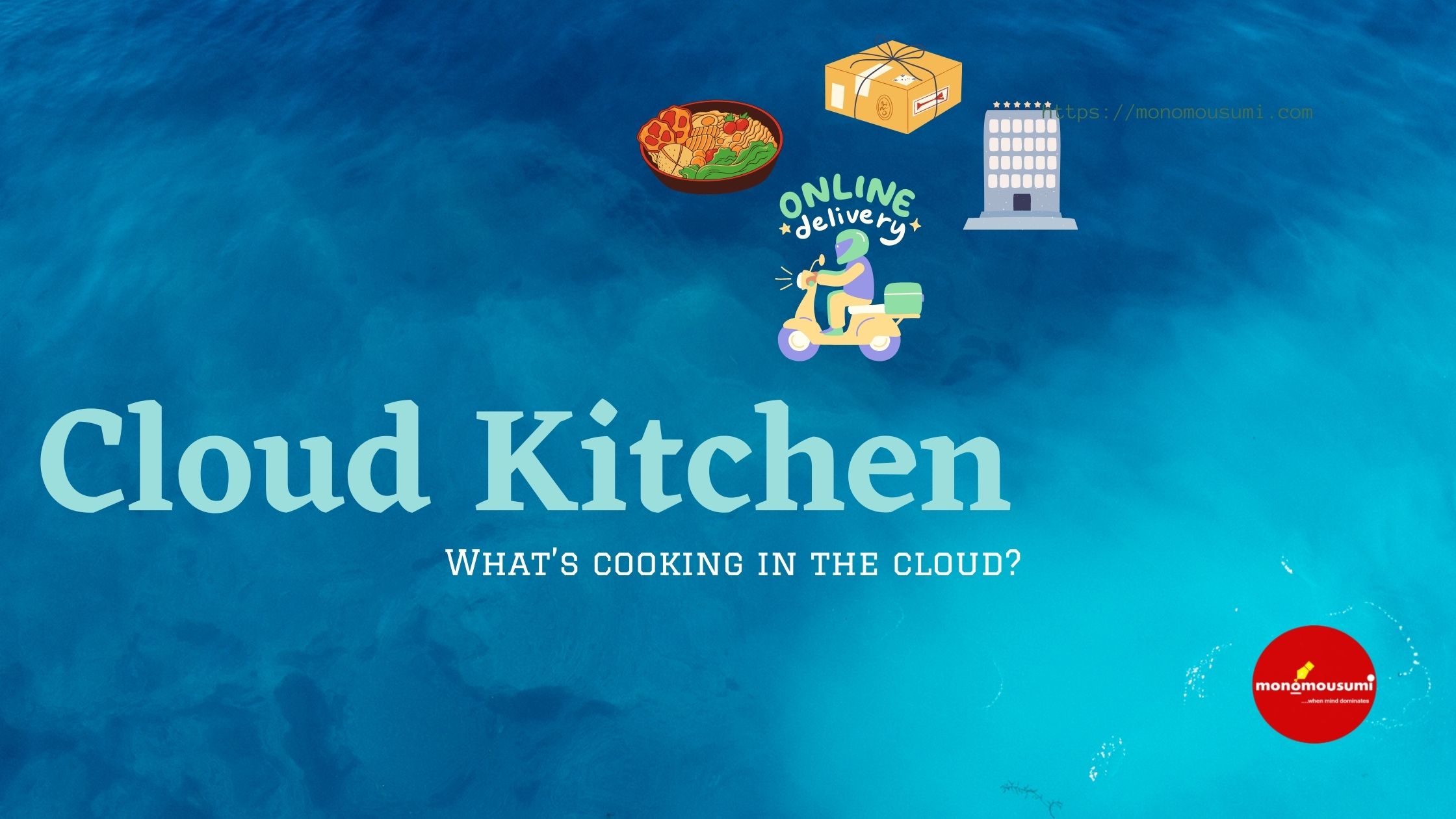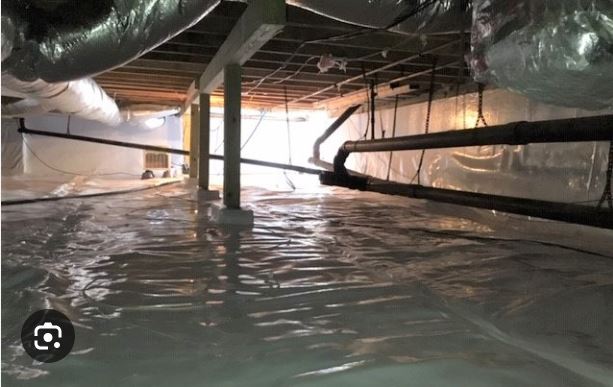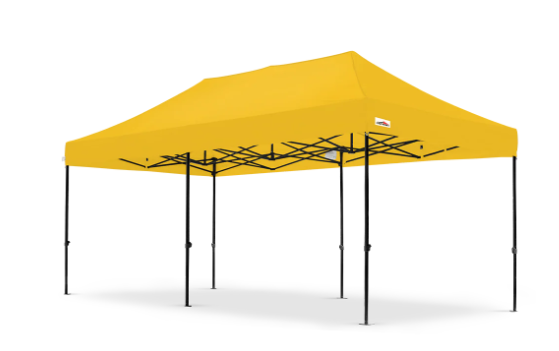
Joey doesn’t share food! But the food does share its home with its fellows. Confused? The next time you fight with your friend over which restaurant is the best for ordering food online, just remember that perhaps both the restaurants are having the final laugh. Or the next time you consider one brand to be more hygienic over the other, you may be forgetting that they are just impostors of each other. Yes, with the advent of online food ordering, our food ordering apps have got flooded in a deluge of brands that promise to have something better to offer compared to the other. While we keep scratching our head on which brand is better, and especially which will be hygienic during these pandemic times, we often fail to understand that most are birds of the same feather.
You read it correctly! Many a time, the food you would have ordered, and your friend would have, may have come from the same kitchen. The Cloud Kitchen business model makes it possible for different – often competing brands – to thrive from the same shared kitchen. Cloud kitchens, also called “ghost kitchens”, are commercial facilities spanning over a large area outside the city premises and are purpose-built to produce food for delivery. Various brands operate as “virtual restaurants” under the common roof and exist as visibly distinct entities on the food ordering app. Very much to our apparent oblivion! It’s not that the cloud kitchen concept is nascent in any fashion; however, it has recently witnessed a surge thanks to the changing consumer habits during the recent onslaught of the pandemic virus. And it has its share of advantages that traditional brick-and-mortar restaurants of the past cannot provide.
Let’s take a deep dive into the wok of cloud kitchens to see what’s cooking in the broth of these common spaces and discover the seasoning of benefits sprinkled over them. However, we must first light the fire that fuels all the cooking – the fire of emerging technologies. Cloud kitchens stand on the bedrock of technologies that automate and streamline the operations and personalization of the brands’ offerings. The very first step in an online restaurant’s value chain is the collection of orders. One can imagine the utter chaos that may result from a multitude of orders arriving at the same time for different brands. Who will coordinate between the brands and segregate the orders for them? Or who will manage which order has come from which food ordering app, since cloud kitchens have tie-ups with several food ordering vendors? This is where a cloud kitchen POS helps, as it seamlessly and autonomously accepts and manages the orders coming in from aggregators, apps, and websites. A robust technology-enabled POS system organizes all orders in different buckets, thereby assisting each brand to look into the relevant orders and understand which food aggregator delivery person to hand over the food item. As soon as an order is received and confirmed, it is displayed on a screen with full visibility to the chefs. And once the orders have been processed by the chefs, the order is automatically updated, and the packaging team is notified to place the food in the box of the correct brand. From order acceptance to preparation to packaging and delivery, everything is recorded by the POS, which increases traceability and transparency in the system.
But wait, what about the distinct taste of each brand? Be it Faasos or McDonalds, the unique taste and the trademarked combination of spices results in a high brand recall value, which no consumer can forget. However, with food preparation under the same roof, how does a company ensure the distinctive taste of each of its brands? Well, the answer the simple, and you must have already guessed it right! By having separate chefs for each of the brands, even if the order collection happens in a standardized fashion. Each brand can maintain a few dedicated chefs specializing in the flavor and ethos of that brand, as too many cooks anyways spoil the broth.
Unlike a dine-in restaurant or a takeaway facility, cloud kitchens don’t need to invest in wait staff. Only a few chefs, some kitchen helpers, and delivery personnel are what’s required. Since the food is the only point of connection between the customer and the cloud kitchen, the latter needs to invest only in getting the food to meet the highest quality standards. This leaves the brand owners with fewer elements to worry about and helps them to focus on the core product or service. We all must have heard the famous adage, “you can’t do big things if you are distracted by the small things.” The exact statement holds for the cloud kitchens as well, as they need to keep a razor-sharp focus on quick delivery of high-quality food.
The most unique value proposition of the cloud kitchen lies in the freedom it gives for experimentation. Usually, a physical restaurant owner must decide the name of the brand, the theme of the interior décor, the tantalizing menu, the wait staff, and the real estate location too. The launch of a new brand would mean opening another restaurant, which shall include the cost of real estate, personnel, and paraphernalia. Cloud kitchen sends most of these into oblivion, as a single decently sized real estate facility can accommodate multiple brands under a single roof and can save the costs of the wait staff and interior décor. Moreover, the cloud kitchen owners can experiment with different brands and menus, and in case something does not work, they can quickly rebound to business by bringing up another brand from the same real estate without having to replace or discard any tangible asset. The only action for the cloud kitchen owner to take is to get a new brand registered in each of the food aggregator apps. This makes experimentation much less risk-prone and gives increased flexibility to entrepreneurs to test their different ideas in the market.
Marketing enters an altogether new dimension with cloud kitchens, as the brands need to rely entirely on digital media for their promotion and brand communication. This is where cloud kitchens need to make significant investments. An online presence on social media networking platforms is an elixir without which no cloud kitchen can survive. Moreover, the kitchen also needs to integrate with third-party vendors, like Zomato, FoodPanda, and Swiggy in India, so that orders from customers begin to flow in. Furthermore, they must also collaborate with complimentary restaurants to induce more people into buying the offers. You must have noticed that your favorite biryani brand offers a side-dish, like choco-lava cake or a lemonade. Now, that does not sound like a match made in heaven. But the biryani maker doesn’t seem to care about the humor it is cracking on your palette. For it knows that most people would prefer having some savory with lip-smacking tongue-tingling spicy food. It is anyways futile for a food-lover to resist chocolate, right? The cloud kitchens know the same and therefore, it is irresistible for them too. Entering into tie-ups with non-competing brands helps build an ecosystem of partners that earn along with each other.
Creative notifications from Zomato and Swiggy flashing on your home screen or lock screen must not be a surprise to you anymore. Day in and day out, these food brand aggregators keep bombarding your cellphone with attractive offers and artistic taglines that can give the best poets a run for their profession. Getting a room in the limited attention zone of customers is very important to induce them into ordering food, and this forms a formidable marketing channel for the cloud kitchen who bank on the direct marketing done by the food restaurant aggregators. Not to forget for a moment that the aggregators also need to do SMS marketing to inform and excite the customers on the new menus and festival offers. And in these times of tech-savviness and shrinking attention spans of customers, traditional methods like email marketing and offline print marketing don’t work much.
The new epoch that has emerged after the pandemic has added additional layers of relevance to the cloud kitchen business models. The barriers of entry are lower here, compared to the traditional business of physical restaurants. The cost overheads are anyways quite low since no floor space is required for seating the customers and no rent is to be paid for storefronts. The only cost involved is for setting up a large kitchen and collaborating with food restaurant aggregators. Ingredient procurement costs are lowered as well through economies of scale, and all these combined savings are passed on to the customer, which reflects in lower costs of food items on the menu. When no customer is complaining in the restaurant or no issue of customer friendliness is coming up, the brands can focus more on getting the cooking right, which increases process efficiency. How can we forget the chatbots and virtual assistants that help in order collection and customer grievance resolution? These AI-enabled tools, equipped with Natural Language Processing, bring seamless automation to the customer interaction and resolve hundreds of customer issues simultaneously.
Finally, one aspect that people hardly talk about is the massive amount of customer-centric data that gets collected at the POS. The food restaurant aggregators and the cloud kitchens accumulate tons of customer-related data that can be leveraged for deriving insights on consumer behavior and understanding spending habits. Marketers, researchers, and analysts can identify patterns and customize the offerings for customers for additional revenue generation.
In the times to come, cloud kitchens are going to dominate the food business landscape. As we grow more inclined towards having chef-made food in the comfort of our homes, home delivery of food will grow in relevance and we will see a surge of an increasing number of brands on the screen of our food aggregator apps. Looking at the pace at which the restaurant business is growing and the time availability of the millennials is shrinking, cloud kitchens are geared up to be the next big thing. This is the business model that is looking straight ahead into the eyes of a vibrant future.
The future belongs to those who can ride the tide of economies of scale in the virtual realms. Restaurants and dining experiences are set to go entirely virtual. Get set for this next big thing in the business landscape of India.
By Arijit Goswami, Mohali


